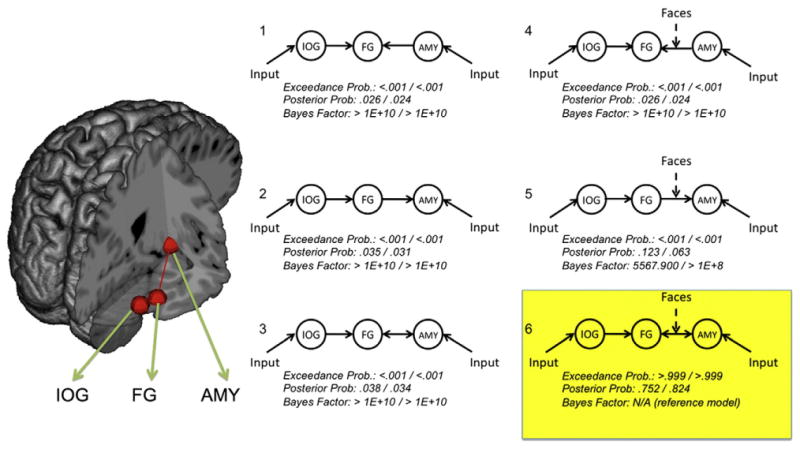Fig. 2.

Dynamic causal models of face network connectivity. Six dynamic causal models (DCMs) were tested against one another using Bayes factor analyses and Bayesian Model Selection (BMS). Each model included lateral occipital cortex (IOG), fusiform gyrus (FG), and amygdala (AMYG), illustrated schematically on the brain to the left (shown in the right hemisphere only; see Table 1 for MNI coordinates). The right side of the figure illustrates the six DCMs included in analyses. All six models included inputs to IOG and AMY and unidirectional intrinsic connections from IOG to FG. Models varied according to whether the FG/AMY was unidirectional from FG (models 1 and 4), unidirectional to FG (models 2 and 5), or bidirectional (models 3 and 6). Models also varied according to whether the specific FG/AMY connection under consideration was modulated by the processing of face stimuli (models 1–3 = no modulation, models 4–6 = modulation). Bayes factor and Bayesian Model Selection analyses converged overwhelmingly on model 6 as the most likely model (highlighted in yellow). BMS exceedance probabilities, posterior probabilities, and Bayes factors (relative to model 6) are listed below each model. Results for the left-hemisphere model are listed to the left of the /; right-hemisphere models are listed to the right of the /.
